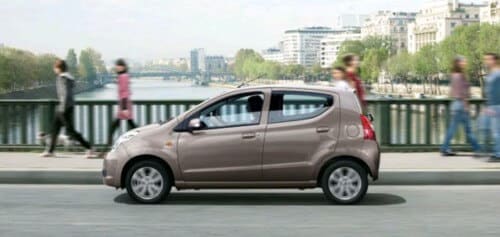We've all heard about it in recent years. The claims of people close to us about not being able to afford the purchase payments of a "large" vehicle, and their desire to choose a vehicle with small dimensions. Almost in the same breath, another significant argument arises regarding the small vehicles, and it concerns the fact that they are economical when it comes to fuel. So what makes a small car economical? And are there even things in the body?

We've all heard about it in recent years. The claims of people close to us about not being able to afford the purchase payments of a "large" vehicle, and their desire to choose a vehicle with small dimensions. Almost in the same breath, another significant argument arises regarding the small vehicles, and it concerns the fact that they are economical when it comes to fuel. So what makes a small car economical? And are there even things in the body?
The importance of self-weight
You don't have to be a transportation expert to know that one of the main parameters that affect a vehicle's fuel consumption is its weight. After all, when the vehicle weighs more, its engine will work harder to reach the expected speeds - which is reflected in a more massive waste of fuel. This of course concerns the number of passengers in the vehicle (among us, this is the main reason why many pay a nominal amount for transportation or rides they receive) or the weight of its luggage, but mainly its specific dimensions.
An examination of the fuel consumption data of the small vehicles, in relation to the larger ones, reveals significant gaps in this important aspect of the vehicle purchase. If we take for example a very popular compact model, Suzuki Alto, it can be seen that the fuel consumption in the manual version is 19 kilometers per liter. This is a low number by all accounts, which contributes to the branding of the vehicle as economical for all intents and purposes.
engine function
Another key element in the fuel economy equation of any vehicle is its engine. Here too, the premise is the same: when it comes to a large and "strong" engine, it is expected that its fuel consumption will go up. Since the large vehicles are often characterized by such engines, their fuel consumption tends to be higher compared to the small ones.
The starting point for the small vehicles, therefore, is excellent. But it is important to emphasize that not only the size plays a role here, but also, and some would say mainly, the efficiency of the engine. The engine may be small, but the lack of efficiency results in high fuel consumption, perhaps even more than a larger model. The small dimensions of the engine do give the vehicle a significant advantage, but it is important to check whether it actually takes advantage of this advantage.
Another significant emphasis is on the driving conditions, while a small vehicle making "simple" urban trips will be more efficient - the difference in driving conditions is more significant in it than in large vehicles. A small engine volume that will result in the vehicle exerting itself excessively, in difficult driving conditions, may increase fuel consumption.
The role of the gearbox
Many of the smaller vehicles try in advance to be as economical as possible. Another way to further lower their price tag is with a manual transmission, which is especially common in small vehicles (although, of course, there are countless automatic models of small vehicles). Reality shows that the fuel consumption of vehicles with an automatic transmission is significantly lower compared to the automatic ones, both in large and small models.
*This article is marketing content on behalf of the advertisers and under their responsibility.
